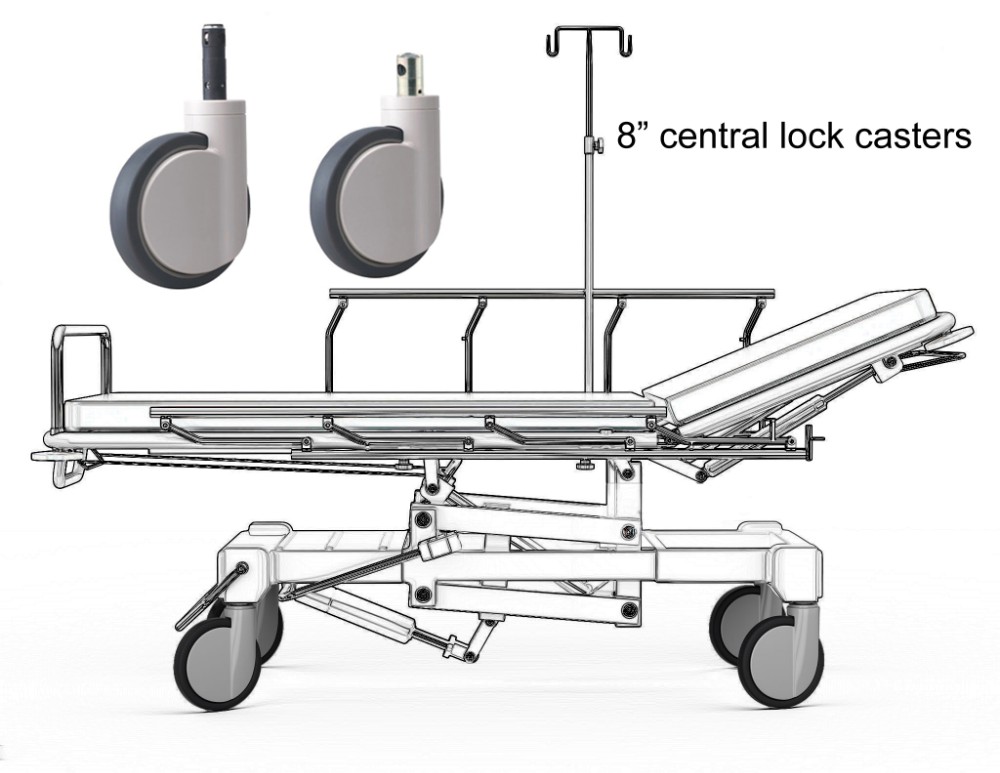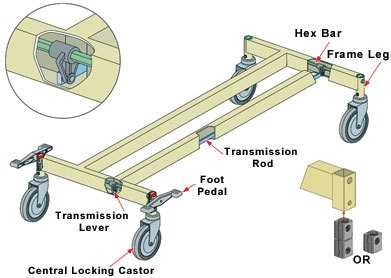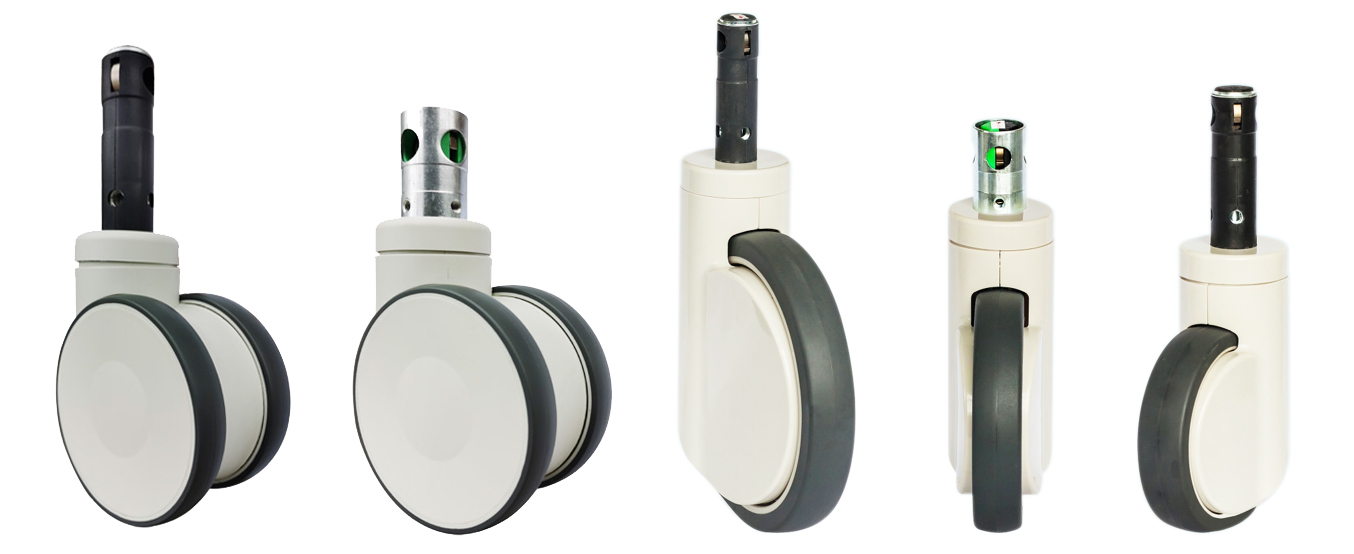8inch/200mm central locking casters for stretcher
Central locking casters are essential components in medical equipment like stretchers, providing both mobility and safety. Specifically, 8inch/200mm central locking casters are a popular choice for stretchers due to their balance of size, weight capacity, and ease of movement. This guide will delve into the key features, advantages, and applications of these casters, as well as considerations for choosing the right type for medical stretchers.

1. Overview of Central Locking Casters
Central locking casters are designed to provide a single locking mechanism that can control multiple wheels simultaneously. This feature is particularly useful in medical environments where quick and secure positioning is required. With a single lever or pedal, caregivers can lock or unlock the wheels, ensuring the stretcher stays firmly in place when needed or moves smoothly when transporting patients.
2. Key Features of 8inch (200mm) Central Locking Casters
Size and Maneuverability: The 8-inch diameter offers a good balance between stability and ease of movement. Larger wheels, such as these, roll over small obstacles and uneven surfaces more easily than smaller ones, which is crucial in hospital settings.
Weight Capacity: Typically, these casters can support significant weight, making them suitable for stretchers that carry heavy loads. A high weight capacity is essential for ensuring the safety and comfort of both the patient and the medical staff.
Locking Mechanism: The central locking mechanism allows all casters to be locked simultaneously, improving safety by preventing unintended movement. This is particularly important during patient transfers, treatments, or when the stretcher is stationary for extended periods.
Swivel and Directional Locking: Many central locking casters also feature directional locking, which allows the stretcher to be guided in a straight line. This feature is crucial in narrow corridors or tight spaces where precise control is needed.
3. Advantages of Using 8inch Central Locking Casters on Stretchers
Enhanced Stability: The larger wheel size provides a more stable base for the stretcher, reducing the risk of tipping. This stability is particularly important during emergency situations or when maneuvering through crowded hospital environments.
Smooth Mobility: The 8-inch casters are better at navigating over small obstacles, such as door thresholds or floor imperfections. This results in a smoother ride for the patient and easier handling for the medical staff.
Efficient Braking: The central locking mechanism simplifies the braking process. Instead of locking each wheel individually, a single pedal or lever can secure all wheels at once. This not only saves time but also ensures that the stretcher remains stationary when required.
Reduced Noise: High-quality central locking casters are designed to minimize noise, which is crucial in hospital settings where a calm environment is necessary. The larger size and often superior materials used in these casters help to dampen noise during movement.
4. Applications of 8 inch Central Locking Casters
Hospital Stretchers: The primary application is in hospital stretchers, where safety, maneuverability, and ease of use are paramount. These casters ensure that stretchers can be moved quickly and safely through hospital corridors and locked securely during patient transfers or treatments.
Emergency Equipment: In addition to stretchers, these casters can be used on other emergency medical equipment, such as mobile treatment tables or supply carts, providing the same benefits of mobility and stability.
Operating Room Equipment: Central locking casters are also used on equipment in operating rooms where precise positioning is necessary. The ability to lock all wheels simultaneously ensures that equipment remains stable during procedures.

5. Considerations for Choosing the Right Casters
When selecting 200mm central locking casters for stretchers, several factors should be taken into account:
Weight Capacity: Ensure the casters can support the combined weight of the stretcher, patient, and any additional equipment. Exceeding the weight capacity can lead to failure of the casters, compromising safety.
Material: The material of the caster wheel is important for durability and performance. Polyurethane wheels, for example, offer a good combination of durability, quiet operation, and smooth rolling.
Floor Compatibility: Consider the type of flooring in the hospital. Some materials may perform better on certain surfaces. Soft rubber wheels are ideal for hard surfaces like tile or linoleum, while harder wheels may be suitable for carpeted areas.
Braking System: Different casters offer various braking options. Some might have a total lock (both wheel and swivel), while others may only lock the wheel. Choose a braking system that aligns with the operational needs of the stretcher.
Swivel and Directional Lock: Depending on the layout of the hospital, the ability to lock the direction of the casters can be crucial. This feature helps in maintaining control and prevents the stretcher from veering off course in tight spaces.
8inch central locking casters are a crucial component in medical stretchers, providing the necessary balance of mobility, stability, and safety. Their size, combined with features like swivel and directional locks, make them ideal for the demanding environments of hospitals and emergency settings. Choosing the right casters involves considering factors such as weight capacity, material, and braking system, all of which contribute to the overall safety and efficiency of patient transport and care. Regular maintenance ensures that these casters will perform reliably, helping healthcare professionals deliver the best possible care to their patients.


 English
English Spanish
Spanish German
German Russian
Russian Arabic
Arabic Portuguese
Portuguese Italian
Italian French
French Hebrew
Hebrew Turkish
Turkish